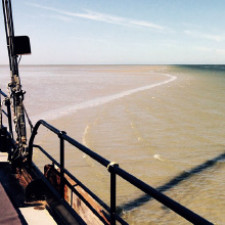Information About The Canals Of Amsterdam
The city of Amsterdam was founded in 1250 around the current square De Dam. An interesting fact is that the name Amsterdam is derived from two words. Amstel, the river that runs through the city and Dam. In the Middle Ages this was pronounced "Aeme Stelle Redamme" which means "Dam in a watery area".
Canals have made the city of Amsterdam rich
Water management protects the city from raids and to manage the water, the first canal was quickly dug. With each expansion of the city, a canal ring area was added so that a whole network of canals was created, as it is today.
What one could not have guessed at that time was that these canals would provide enormous wealth in the Middle Ages.
When the danger of raids had disappeared, the canals were used to facilitate the transport of goods. Most of the canal houses were originally warehouses. At that time - around 1600 - there were no house numbers yet and you can still tell by the decoration on the buildings what kind of warehouse it was. See the movie below about the expansion of Amsterdam in the seventeenth century
Canal houses were all warehouses
Most of the canal houses lean slightly forward and this has been done deliberately. This made it easier to lift the loads with the help of pulleys. These pulleys are still visible on many buildings. Traditionally, the basement was for the staff. The first floor was for the landlord and his family and the rest was storage space. That's why the stairs in a canal house are very narrow because that would only take unnecessary space.

If you sail along the canals you will notice that the width of almost every building is different. In the past, you only paid tax on the width of your house and not on its volume. The narrowest canal house in Amsterdam is located on Singel 166. The facade is only 1.80 meters wide.
The most famous canals of Amsterdam
The most famous canals of Amsterdam are the Singel, the Herengracht, the Keizersgracht canal, and the Prinsengracht and run in a U-shape from Central Station. The city of Amsterdam has a total of 165 canals with a length of approximately 75 kilometers.
On a sunny summer's day, you will encounter hundreds of small boats that the inhabitants of Amsterdam use to sail around with a bottle of wine or another drink with friends.
Sailing in the canals of Amsterdam
All-day long you can join one of the many tour boats. Ticket prices vary according to the duration of the trip, whether you prefer to only want to sail or have a fully arranged trip with food and drinks. All tour boats are powered by natural gas or electricity.
This is to prevent pollution. You can also rent a boat at various places to sail on the canals. Because of the more than 1500 small bridges and sharp bends, some steering skills are required. It is also not uncommon to ask a random boat owner to join them.
Swimming in the canals of Amsterdam
In the past, the canals were used to dump waste. Also, the canal houses were not yet connected to the sewer, so the water was very polluted. Since 2017, the last houseboat has been connected to the sewer and long before that, the canal water was more than clean enough to swim in. Every year there is even the Amsterdam City Swim to raise money for ALS.
When the Dutch football team or the Amsterdam soccer club Ajax wins a championship, they sail through the canal with the whole team. Many spectators jump from the bridges to swim along with the caravan of boats.
Bridge keepers' houses along the canals
The city used to have hundreds of bridge keepers' houses where bridge keepers could operate bridges and locks. Some of these monumental buildings have been converted into double hotel rooms. Read more about a special night in one of these unique places.
Amsterdammertjes
Along the canals, you can see all kinds of parked cars. Between the cars and the canals are often dark brown poles with 3 crosses. These are called Amsterdammertjes. The story goes that in the seventies many cars ended up in the canal during parking.
This was costing the insurance companies so much money that they decided to place these so-called "Amsterdammers". Nowadays the Amsterdammertjes are a symbol for Amsterdam.
It's not just cars that end up in the canals, now and in the past. Every year, Amsterdam's waste disposal service removes countless bicycles, motorcycles, and even weapons from the bottom of the canal. Occasionally a drunken tourist falls into the canal. Usually, this is not a problem because there is a ladder up every few meters, but in the winter when there is ice on the water, it sometimes ends badly.
If you want to know more about the canals of Amsterdam, you can contact a local inhabitant of Amsterdam via TheONE. He or she will be happy to tell you more or show you the place you want via his or her Smartphone.
-
Salim Haddadpersonal trainer€ 1,17 pm
-
Nicci SeverensSEO writer€ 0,16 pm
-
Frits van NoortwijkLeadershipscoach€ 1,21 pm
-
Barber BrinkmanBusiness Development€ 1,60 pm
-
Geert PelsmaMarketing strategist€ 1,50 pm
-
Mursal AhmadiPsychologist / Coach€ 1,25 pm


























